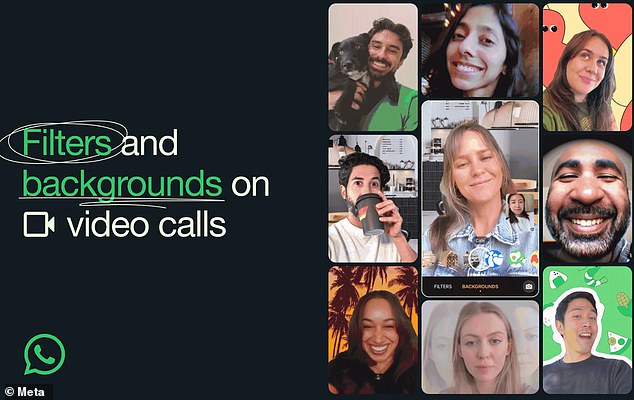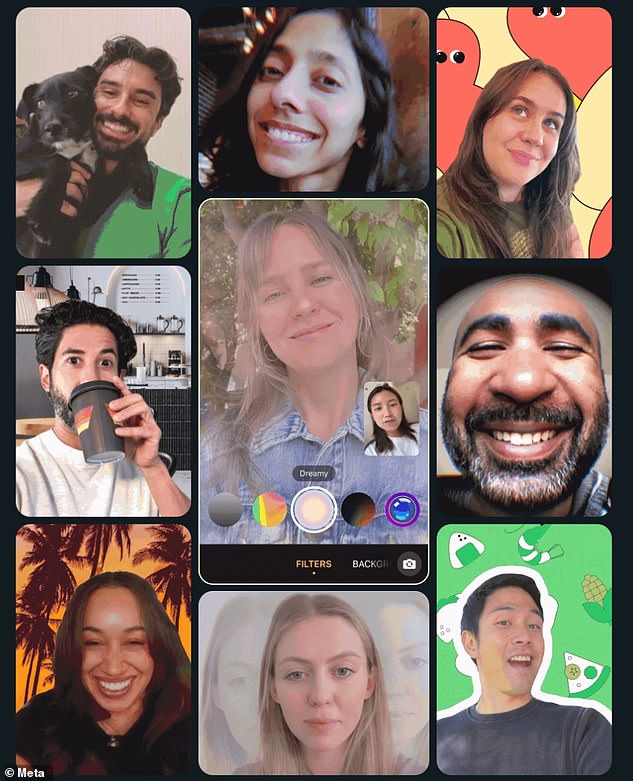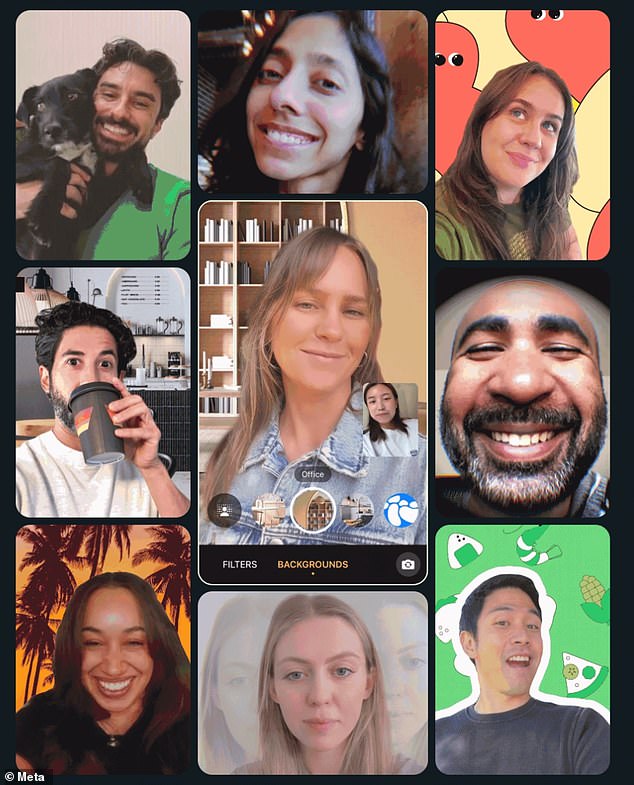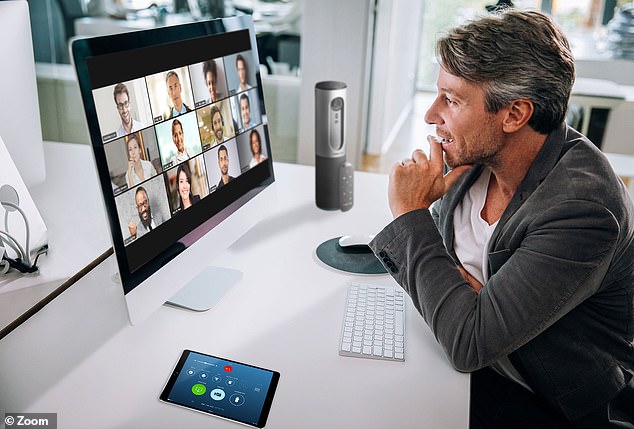WhatsApp takes on Zoom: Meta’s messaging app now lets you add filters and backgrounds to your video calls – here’s how you can try it
With more than two billion users in 180 countries, there’s no doubt that WhatsApp is the largest messaging app in the world.
But it appears the Meta-owned platform has made another devious move in an attempt to lure users away from video conferencing giant Zoom.
WhatsApp has revealed that it is rolling out filters and backgrounds for video calls to make personal and business video calls more fun.
Virtual video chat backgrounds are already used by Zoom and help maintain your privacy by hiding your real surroundings.
Meanwhile, filters can freshen up your look and inject some much-needed fun into the proceedings, especially if it’s a dreary work trip.
With an estimated two billion monthly active users, WhatsApp is the most popular mobile messenger app in the world (file photo)

According to Meta, the filters and backgrounds can be selected once the one-on-one or group video call has started.
In a blog post, WhatsApp says filters and backgrounds will be available to everyone “in the coming weeks” – for both one-on-one video chats and group video chats.
“Conversations on WhatsApp should always feel fun and expressive, and that applies today as well,” the blog post reads.
‘That’s why we’re introducing filters and backgrounds to make your video calls even more attractive.
“With these new effects, you can now change your background during a video call or add a filter for a more personal touch.”
According to Meta, the filters and backgrounds can be selected when a one-on-one or group video chat has started.
During the call, users simply tap the effect icons at the top right of the screen, which will bring up the selections.
There are 10 filters to choose from: warm, cool, black and white, duo, frosted glass, light leak, dreamy, prism light, fisheye and ‘vintage TV’.
There are also 10 new backgrounds: blur, living room, office, cafe, pebbles, foodie, smoosh, beach, sunset, party and forest.
Some backgrounds are photos, others are colorful illustrations.

There are 10 filters to choose from: dreamy (photo, center), warm, cool, black and white, duo, frosted glass, light leak, dreamy, prism light, fisheye and ‘vintage TV’

And there are 10 backgrounds: office (photo, center) blur, living room, cafe, pebbles, foodie, smoosh, beach, sunset, party and forest
WhatsApp explains: ‘Filters are designed to help you create a more playful atmosphere, whether that means adding a pop of color or creating a more artistic feel to your video.
‘With backdrops you can keep your environment private and transport yourself to a cozy coffee shop or a comfortable living room for a sleeker and polished look.’
WhatsApp is also adding ‘touch-up’ and ‘low light’ options that will ‘enhance the look and brightness of your surroundings, making your video calls more vibrant and fun’.
In the announcement, the Meta platform did not mention any rivals in the video conferencing space.
But the move is a surefire way to get people off platforms like Zoom, Microsoft Teams and Google Meet – and onto WhatsApp.

Zoom has become extremely popular during the coronavirus lockdown, as have other platforms such as WebEx, Microsoft Teams and Skype (file photo)
These videoconferencing platforms have skyrocketed in popularity during the Covid-19 pandemic, when employees were forced to work from home.
Even four years later, many companies are only just getting their employees back into the office, while many companies still have no plans to do so.
According to a recent study, videoconferencing continues to be a big part of modern life as people continue to work remotely and attend virtual events.
The study found that a blurred background or an animated video background makes you tired because it stimulates the brain too much.
Millions of people use WhatsApp for work, even though the product was originally aimed at facilitating personal connections between friends and family.
WhatsApp used to be strictly for text messaging, similar to SMS, but it launched voice calling for its mobile app in 2015 and video calling the following year.
